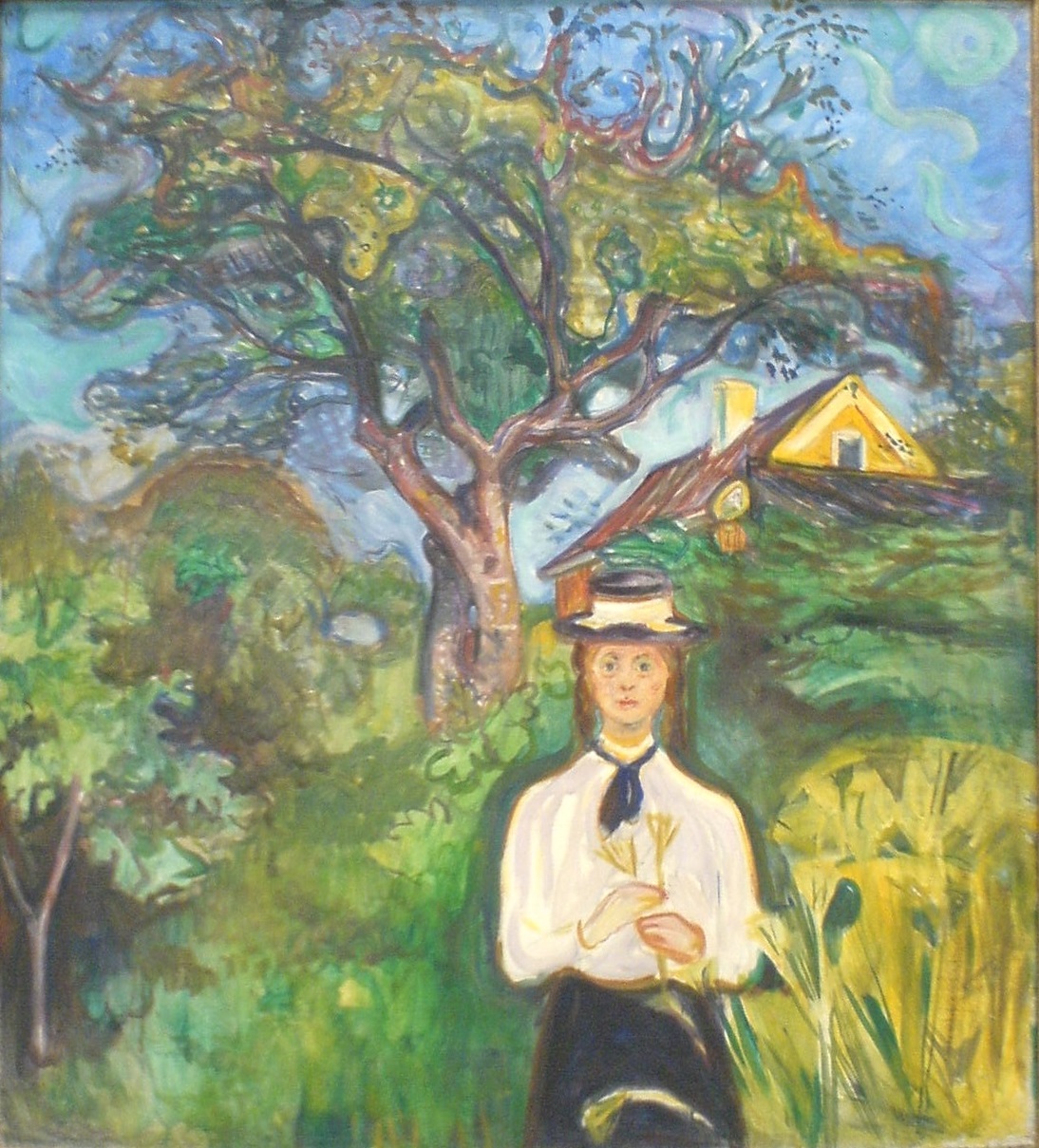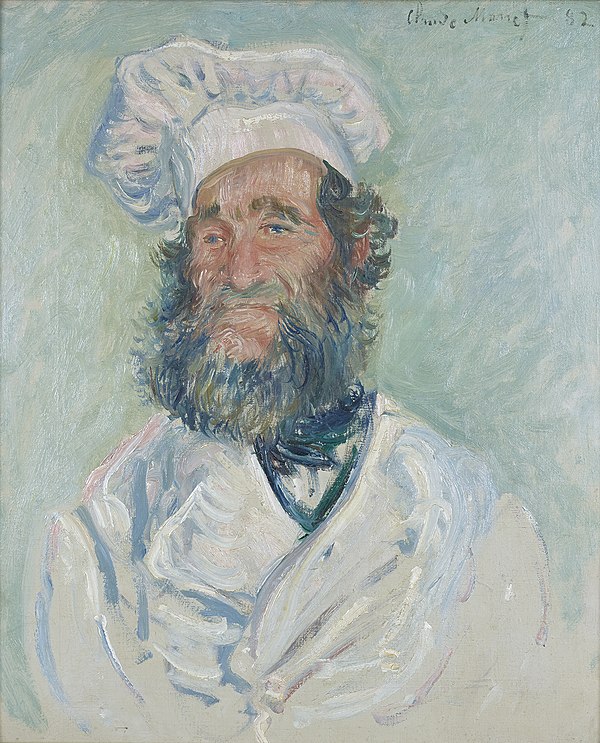Edvard Munch was the architect of the German Expressionist movement, and this painting is a charitable example of that period. Upon first the gaze, the scene is colorful and jovial; the young girl, who is dressed in brightly clothed in white above her waist, and black below her hips, is strongly suggesting a disturbance in the making or one about to be commemorated. Perhaps she is being lured by someone; the innocent looks on her face may suggest she is being seasoned for some promiscuous misbehavior or conjuring mischievous activity with that which is unseen. Why did Munch choose an apple tree for his subject to stand under? A reference to temptation? Where is the serpent? Notice the color of the apples! The golden, amber-shaded atmosphere around the young woman is like a pall around her; it could be suggested as a protection, or to admonish the viewer that all is not what it seems.
As the intensity escalates, the house in the background serves as a peaceful reminder of contentment and conviviality; tragedies and troubles are promised solutions. But the viewer purposefully continues to gaze at the unshaped, irritated apple tree; there is trouble in her paradise, yet there is also hope. While the young lady for a hoisted moment, is distracted by the performance of temptation, she displays on her face a halo of confidence and rebukes the unseen roguery. However, Munch does not spare us from conflict; it is the central theme, despite confidence and resistance serving as the protectors of innocence and truth.
A dark, smoky shadow crawls around the canvas. It is astute and battles the lights of color to shade the pure and sacred myths of human apologue and victory over sin. It wants to convince us that our perceptions of compotation and preservation are under threat. An unsleeping and focused eye is needed in the trials of life and hardship. In the painting, there is also a reference to exile and loneliness. Munch’s lifelong struggle with women, domestic relationships, and poverty are also admitted in this convoluted theme of enticement and recognition of replete tranquility.
Above it all, not surprisingly, is the azure sky, lit with hope and conservancy. While Munch never underestimated the misery of sin and darkness, the ever-underlying Christian theme of Salvation ripens across the horizon of the painting like Elijah’s chariots of fire summoning him to eternity. Conflict, temptation, sin, glorification of indulgence, innocence, deceit and treachery are all equally represented. The serene dialogue that the viewer has with the painting is Munch’s ultimate achievement. Debauchery, malice, indignation and servitude are not permitted scenery or cinctured with comment. The apostolic compromise of chromaticity and complexion are pillowed gently under each clouded brushstroke of tension and focus. The result is Munch’s illustration of the victory of righteousness and faith. While circumstance and vulnerability are present, the divinity of honest fortitude and tradition of appropriate habitation is superlatively defended. Serenity and apriorism is entombed on the stage for the spectator.
| Artist |
|
|||||||
| Title | ||||||||
| Object type | painting | |||||||
| Description |
English: Paintings in the Carnegie Museum of Art, Pittsburgh, Pennsylvania.
|
|||||||
| Date | 1904 |
|||||||
| Medium | oil on canvas |
|||||||
| Dimensions | height: 110.4 cm (43.5 in) |
|||||||
| Collection | ||||||||
| Accession number |
65.16 (Carnegie Museum of Art)
|
|||||||
| References | ||||||||
© 2024, Mark Grago. All rights reserved.





